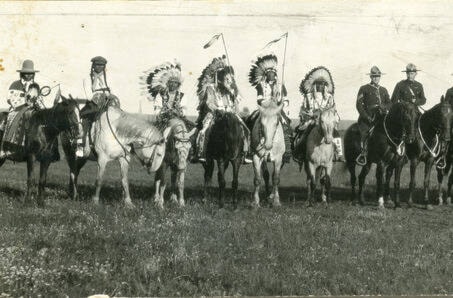On May 23, 2023, the Royal Canadian Mounted Police (R.C.M.P.) officially celebrated the 150th anniversary of the founding of what has become Canada’s national police force. The members of this storied organization have become one of the symbols of the country, although the force itself has at times been controversial and the focus of much national debate.
One of the key factors behind the formation of the North West Mounted Police (the original name of the Force) was the development of the American whiskey trade which caused great lawlessness, particularly in the border areas. Hence, when the N.W.M.P. was deployed West in the summer of 1874, one of the first goals was putting an end to the whiskey trade and the establishment of law and order.
However, once the police arrived at their destination of the American whiskey posts in Southern Alberta, they found the establishments to be unoccupied. The whiskey traders, on hearing of the N.W.M.P. approach, decided to decamp and move their operations elsewhere.
Once in the West, the N.W.M.P. began the establishment of a network of police posts and patrol routes. Most of the activity in Central Alberta was initially limited to constables making their way from the posts in Southern Alberta to Fort Edmonton and Fort Saskatchewan.
Patrols were also sent to the buffalo hunter camps which existed at Tail Creek and Buffalo Lake in East Central Alberta. For a brief while, a small police post was established at Tail Creek. However, with the rapid disappearance of the buffalo (bison), these camps went into rapid decline and the Tail Creek post was closed.
In the early 1880s, the Canadian Pacific Railway (C.P.R.) was built across the West. The N.W.M.P. played a major role in maintaining law and order along the construction route and in the new communities that sprang up along the line. The Force also took a significant role in the relationships between the First Nations and the escalating settlement that accompanied the construction of the C.P.R.
The Calgary-Edmonton Trail became the major transportation link between Northern and Southern Alberta. Police patrols along the route became increasingly frequent. Duties included helping travelers in distress, occasional accompanying of the Royal Mail along the route and the escorting the treaty payments to the new First Nations reserves which had been established in the Battle River area, at what is now Maskwacis (Bear Hills), under Treaty Six.
Meanwhile, the starvation and destitution that resulted from the rapid disappearance of the bison, as well as the fundamental disruptions of the First Nation and Metis ways of life with the rapid influx of settlers, fueled widespread anger, frustration and fear. Finally, violence broke out with the commencement of the North West (Riel) Rebellion in the spring of 1885.
The Alberta Field Force, consisting of militia and a small group of N.W.M.P. was dispatched from Calgary to Edmonton. It was responsible for securing the Calgary Edmonton Trail which included the construction of three small forts at Red Deer (Fort Normandeau), Ponoka (Fort Ostell) and Wetaskiwin (Fort Ethier).
There was some drama when Inspector Perry and Constable W.E. Diamond of the N.W.M.P. were on a raft transporting a field gun across the Red Deer River which was in spring flood. The cable rope snapped and the raft went careening down the river. Fortunately, neither the men nor the gun were lost in the mishap.
The three Alberta Field Force forts were manned by units of the 65 Battalion (Mount Royal Rifles) militia for the remainder of the Rebellion. In 1886, Fort Normandeau was taken over by a detachment of the N.W.M.P. and turned into a police post.
The local detachment of the R.C.M.P. has a special “pop-up” display to mark the 150th anniversary of the Force. The display will be up for the first two weeks of June and is free to the public for viewing.
Michael Dawe is a Red Deer historian and his column appears on Wednesdays.
